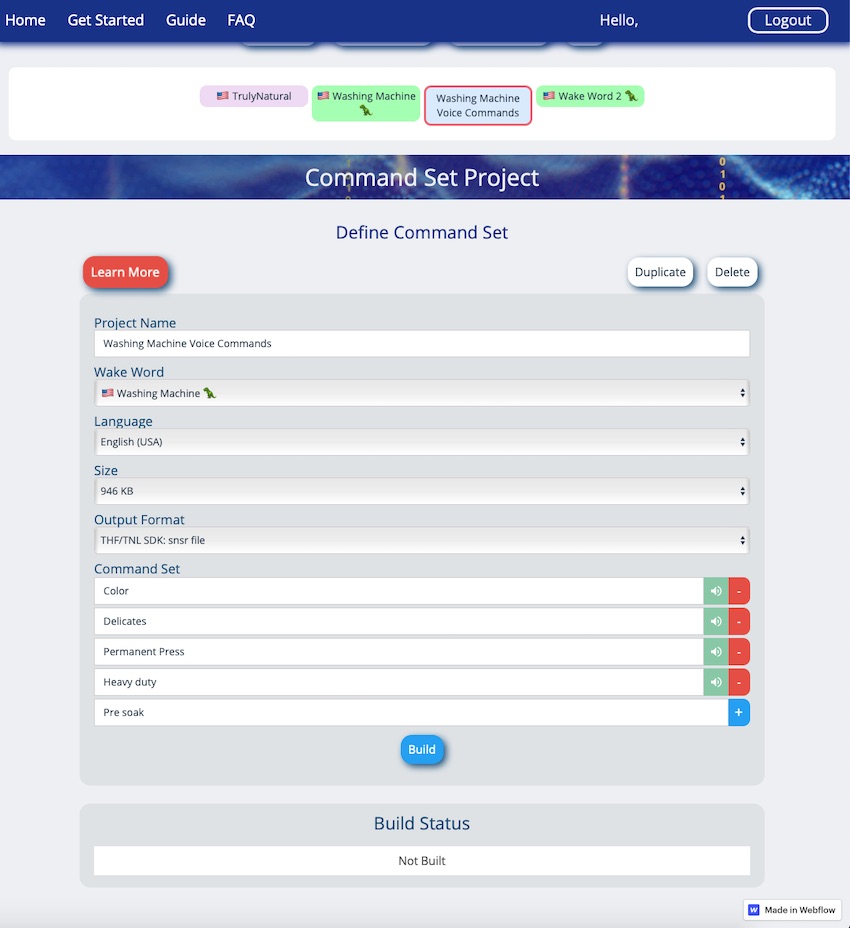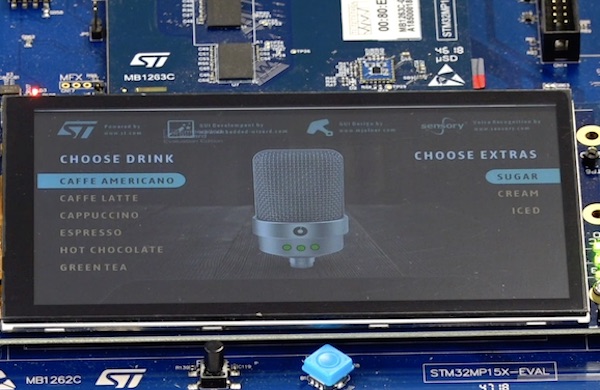Sensory’s VoiceHub Expands to Offer Easier Way to Build Voice User Interfaces for Edge Devices and Apps
Sensory announced today that its VoiceHub product has expanded to include tools for easily building voice user interfaces for edge devices and apps. VoiceHub was first introduced in October as a solution for quickly creating, training, and testing custom wake words. The web-based solution leverages data entered into an online form to kick off a process that trains a custom wake word recognition model in as little as an hour. VoiceHub then makes the custom wake word engine available for testing through an Android or iOS app and can be downloaded for implementation in an application stack.
With today’s announcement, Sensory is applying a similar model to enable large vocabulary speech recognition systems for edge-based devices with “customizable natural language understanding capabilities.” “We introduced VoiceHub in October for our TrulyHandsFree product. That is for small footprint, very limited speech recognition. It is very good for wake words and very good at performing with background noise. It is a pretty unique approach that allows you to use low computing resources with high accuracy but limited vocabulary — 50-100 words,” said Todd Mozer, CEO of Sensory, in an interview with Voicebot.
Mozer added, “VoiceHub now has our TrulyNatural product. This means it can handle large vocabularies with grammars with an intents and entities approach. This supports natural language and is created in a truly automated fashion. Providing free access to tools like VoiceHub will help accelerate the next wave of branded voice experiences and domain-specific, customized voice assistants.”

Support at the Chip Level
Sensory is also rolling out support for VoiceHub with a number of chip manufacturing partners. Daniel Colonna of STMicroelectronics suggests, “ST customers…are able to design working prototypes of natural language-capable products in a manner of minutes, not days.” He speculates that this can dramatically reduce time-to-market. The STM32 Discovery Board from STMicro supports a number of Sensory products including the new VoiceHub features. Sensory also indicated that several other manufacturers are supporting the technology including Ambiq and DSPG.

The Rise of Custom Assistants
Amazon, Apple, and Google have generated broad awareness among consumers about voice assistants. The wide distribution of these products is beginning to raise consumer expectations about the availability of voice interactive capabilities in devices by other device makers. While Amazon and Google make it easy to embed cloud-connected versions of Alexa and the Assistant within a variety of devices, many manufacturers would prefer to have their own assistant so they can have complete control over the user experience and user data. In addition, some device makers find it preferable to enable an edge-based assistant that operates without the need for cloud connectivity.
This is where Sensory believes it has an edge. “VoiceHub can be used anywhere but is geared for embedded [implementations] in low resources environments. Getting wake words and other language models to perform well is a lot of work,” said Mozer. He added that it is even harder to succeed where computing resources are limited to the chipsets and memory on the device with no access to cloud services–a requirement for Alexa and Google Assistant. “Sensory has figured out a way to do this efficiently [on device].”
Mozer indicated that the TrulyNatural solutions accessed through VoiceHub can be deployed in mobile or web apps but he expects the biggest interest will come from device makers. “With our SDK, you can implement anywhere you want,” he said. It can even be deployed in the cloud to drive higher compute resource efficiency but that would be less common than embedding the solution directly on devices.
Voicebot’s research suggests that customized voice experiences will rise quickly over the next five years to become commonplace in electronic devices and apps. Amazon announced last week that it will now support the development of custom assistants using Alexa technology and there are a number of other providers that companies can enlist for these projects ranging from Cerence and Nuance to Microsoft and SoundHound.
However, there are very few companies focused on deployments that do not require cloud connectivity and can also operate on devices with limited computing power and memory. If this segment takes off, Sensory may be well-positioned to capitalize on the unique requirements of on-device deployment.
Follow @bretkinsella Follow @voicebotai
Sensory’s New VoiceHub Platform Offers Quick Custom Wake Word Creation








